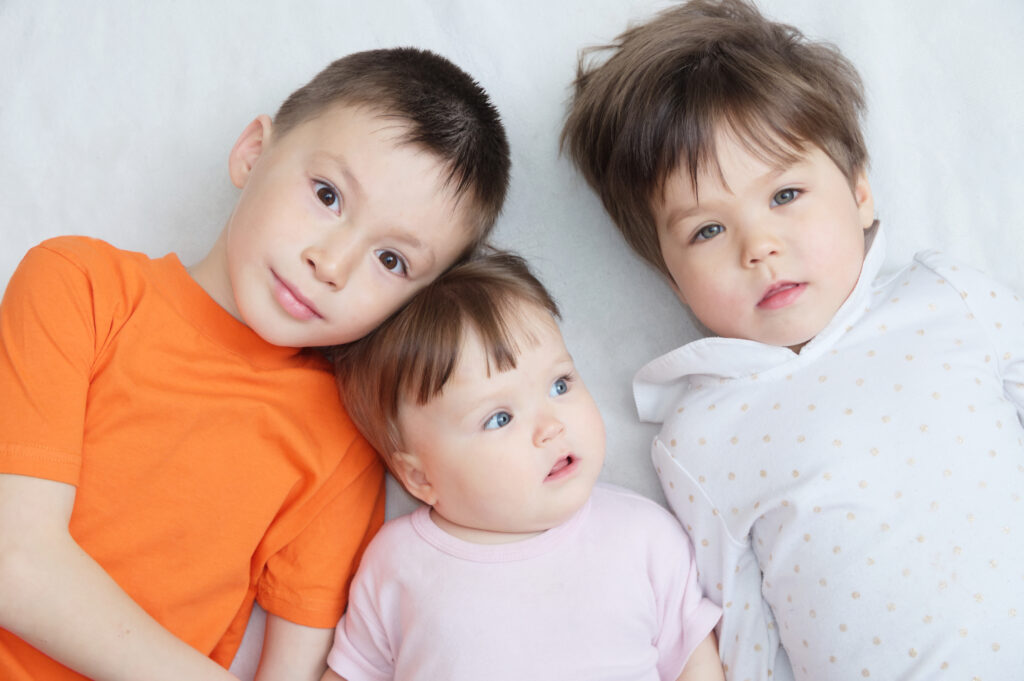Heading 1
Heading 2
Heading 3
Heading 4
Heading 5
Large italic highlight text
Lorem ipsum dolor sit amet, consectetur adipiscing elit. Integer ullamcorper semper interdum. Morbi non lacinia nunc, sit amet venenatis arcu. Suspendisse consequat pulvinar lacus ut interdum. Maecenas rhoncus metus in leo semper interdum. Nunc ullamcorper scelerisque odio nec dignissim. Aliquam nec nunc risus. Phasellus tincidunt viverra lectus, ac blandit erat tempus quis.
Duis in diam quis metus pharetra lacinia. Nulla commodo tortor ac aliquam sollicitudin. Proin et nunc tortor. Orci varius natoque penatibus et magnis dis parturient montes, nascetur ridiculus mus. Nulla eu malesuada tellus, vel congue felis. Donec posuere ligula et lacus pellentesque ultricies. Pellentesque sollicitudin consectetur velit, vel mattis metus placerat et. Nullam sem nisl, auctor eget mi at, porttitor commodo risus. Donec quis molestie lorem, at eleifend leo.
Bio Bucket Block





Single Text Block
The Long-Term Follow-Up Cares and Check Initiatitve (LTFU Cares & Check) enables newborn screening programs, patients, families, and clinicians to work together to ensure that individuals
with a genetic disease identified through newborn screening achieve the best possible come.
Our Goal
The goal of long-term follow-up (LTFU) is to assure the best possible outcome for individuals with disorders identified through newborn screening (NBS). The LTFU-Cares and LTFU-Check Initiative is a two-year effort to develop, implement, and evaluate LTFU for newborns diagnosed with Spinal Muscular Atrophy (SMA) through NBS.
Use Case:
To assess functionality and usefulness of the system, we will focus on one condition, which we call it use case. We chose spinal muscular atrophy (SMA) as our use case. To do so, we will design the components of LTFU-Cares and LTFU-Check to support LTFU care and data collection for newborns diagnosed with SMA through newborn screening. We welcome input from subject matter experts and advocacy groups such as Cure SMA add hyperlink for Cure SMA
PURPOSE
- To support the development of comprehensive models of LTFU that demonstrate collaborations between clinicians, public health agencies, and families;
- To ensure that newborns and children identified through NBS achieve the best possible outcomes.
GOALS
- Expanding the ability of state public health agencies to provide screening, counseling, and services;
- Collaborating with clinicians, public health agencies and families to create a system of care that can assess and coordinate follow-up and treatment of NBS conditions.
OBJECTIVES
- Implement LTFU model protocols with at least five clinical sites;
- Demonstrate integration of LTFU model data from clinical and public health systems;
- Increase the number of infants, children, and families who receive coordinated LTFU care through a medical home.
OUTCOME
- LTFU models supported under this HRSA program should facilitate the collection and integration of data from public health and clinical information systems to assess, inform, and ultimately achieve comprehensive LTFU of individuals identified through NBS.
PURPOSE (extended)
LTFU 4 models supported
- To support the development of comprehensive models of LTFU that demonstrate collaborations between clinicians, public health agencies, and families;
- To ensure that newborns and children identified through NBS achieve the best possible outcomes.
GOALS (extended)
LTFU 3 models supported
- Expanding the ability of state public health agencies to provide screening, counseling, and services;
- Collaborating with clinicians, public health agencies and families to create a system of care that can assess and coordinate follow-up and treatment of NBS conditions.
OBJECTIVES (extended)
LTFU 2 models supported
- LTFU 5 models supported
- Implement LTFU model protocols with at least five clinical sites;
- Demonstrate integration of LTFU model data from clinical and public health systems; Increase the number of infants, children, and families who receive coordinated LTFU care through a medical home.
OUTCOME (extended)
LTFU 1 models supported
- LTFU 5 models supported
- LTFU models supported under this HRSA program should facilitate the collection and integration of data from public health and clinical information systems to assess, inform, and ultimately achieve comprehensive LTFU of individuals identified through NBS.
Why is Long-Term Follow-Up (LTFU) important in NBS?
Newborn screening (NBS) is a multi-component, multi-stakeholder system that begins with prenatal education, neonatal screening in birthing hospitals and state-based NBS laboratories, diagnosis and clinical care, and longitudinal medical management.
All components of this system are necessary to ensure newborns with genetic conditions achieve the best possible outcome.
Newborn screening (NBS) is a multi-component, multi-stakeholder system that begins with prenatal education, neonatal screening in birthing hospitals and state-based NBS laboratories, diagnosis and clinical care, and longitudinal medical management.
All components of this system are necessary to ensure newborns with genetic conditions achieve the best possible outcome.
- The goal of long-term follow-up (LTFU)
- The goal of long-term
Newborn screening (NBS) is a multi-component, multi-stakeholder system that begins with prenatal education, neonatal screening in birthing hospitals and state-based NBS laboratories, diagnosis and clinical care, and longitudinal medical management.
- The goal of long-term follow-up (LTFU)
- The goal of long-term
All components of this system are necessary to ensure newborns with genetic conditions achieve the best possible outcome.
Why is Long-Term Follow-Up (LTFU) important in NBS?
Newborn screening (NBS) is a multi-component, multi-stakeholder system that begins with prenatal education, neonatal screening in birthing hospitals and state-based NBS laboratories, diagnosis and clinical care, and longitudinal medical management.
Newborn screening (NBS) is a multi-component, multi-stakeholder system that begins with prenatal education, neonatal screening in birthing hospitals and state-based NBS laboratories, diagnosis and clinical care, and longitudinal medical management.
All components of this system are necessary to ensure newborns with genetic conditions achieve the best possible outcome.
Newborn screening (NBS) is a multi-component, multi-stakeholder system that begins with prenatal education, neonatal screening in birthing hospitals and state-based NBS laboratories, diagnosis and clinical care, and longitudinal medical management. Newborn screening (NBS) is a multi-component, multi-stakeholder system that begins with prenatal education, neonatal screening in birthing hospitals and state-based NBS laboratories, diagnosis and clinical care, and longitudinal medical management.

What is Newborn screening (NBS)?
Newborn screening (NBS) is a multi-component, multi-stakeholder system that begins with prenatal education, neonatal screening in birthing hospitals and state-based NBS laboratories, diagnosis and clinical care, and longitudinal medical management.
All components of this system are necessary to ensure newborns with genetic conditions achieve the best possible outcome.

What is Newborn screening (NBS) - extended right ?
Newborn screening (NBS) is a multi-component, multi-stakeholder system that begins with prenatal education, neonatal screening in birthing hospitals and state-based NBS laboratories, diagnosis and clinical care, and longitudinal medical management.
All components of this system are necessary to ensure newborns with genetic conditions achieve the best possible outcome.
- The goal of long-term follow-up (LTFU)
- The goal of long-term
Newborn screening (NBS) is a multi-component, multi-stakeholder system that begins with prenatal education, neonatal screening in birthing hospitals and state-based NBS laboratories, diagnosis and clinical care, and longitudinal medical management.
- The goal of long-term follow-up (LTFU)
- The goal of long-term
All components of this system are necessary to ensure newborns with genetic conditions achieve the best possible outcome.
Highlight Section: Visualization
Short Description — Nullam tincidunt adipiscing enim. Fusce commodo aliquam arcu. Quisque rutrum. Morbi vestibulum volutpat enim.

Highlight Section: Table
Short Description — Nullam tincidunt adipiscing enim. Fusce commodo aliquam arcu. Quisque rutrum. Morbi vestibulum volutpat enim.
| Header 1 | Header 2 | Header 3 | Header 4 | Header 5 |
|---|---|---|---|---|
| Lorem Ipsum is simply dummy text of the printing | Lorem Ipsum is simply | Text of the printing | Contrary to popular belief | There are many variations of passages of Lorem Ipsum |
| Text of the printing | Contrary to popular belief | Lorem Ipsum is simply dummy text of the printing | There are many variations of passages of Lorem Ipsum | Contrary to popular belief |
| Contrary to popular belief | Contrary to popular belief | Contrary to popular belief | Contrary to popular belief | Text of the printing |
Highlight Section: Text
Short Description — Nullam tincidunt adipiscing enim. Fusce commodo aliquam arcu. Quisque rutrum. Morbi vestibulum volutpat enim.
Information about the data points included in LTFU Cares and LTFU Check will be posted here. After completion of each study milestone, data gathered or generated during that phase will be shared on this page. This periodic data sharing will serve as a means to further inform stakeholders while these LTFU tools are being developed.
Information about the data points included in LTFU Cares and LTFU Check will be posted here. After completion of each study milestone, data gathered or generated during that phase will be shared on this page. This periodic data sharing will serve as a means to further inform stakeholders while these LTFU tools are being developed.
Sign up
NBSTRN can help you plan your study from brainstorming your idea, providing infrastructure in data collection or writing a letter of support. Submit your message using this form.